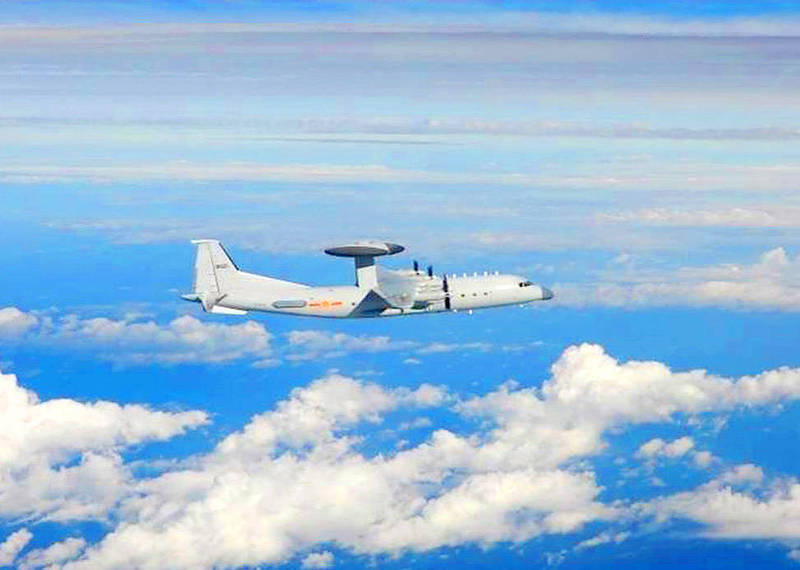《TAIPEI TIMES》 Ministry working to fight Chinese cognitive warfare

A Chinese People’s Liberation Army Shaanxi KJ-500 airborne early warning and control aircraft is pictured in a handout photograph following the incursion of 19 Chinese warplanes into Taiwan’s air defense identification zone on Oct. 2. Photo: EPA-EFE / the Ministry of National Defense
ALREADY COVERED: All scenarios in a Reuters report on a possible Chinese attack have already been discussed by the defense ministry and Pentagon officials, an analyst said
By Wu Su-wei and William Hetherington / Staff reporter, with staff writer and CNA
The Ministry of National Defense yesterday said that it is combating Chinese Communist Party (CCP) cognitive warfare efforts against Taiwan.
The ministry said it has submitted guidelines to the Legislative Yuan to define cognitive warfare efforts by foreign powers and to outline the military’s actions to combat it.
China’s use of social media and other platforms to spread disinformation and cause social unrest in Taiwan has been increasing, it said.
The CCP engages in cognitive warfare with Taiwan through the use of propaganda, fake social media accounts, content farms and Taiwanese collaborators, it said.
The military traces misinformation shared through social media in Taiwan, and posts corrected information on its own social media accounts and Web sites, the ministry said, adding that it also posts the corrected information in replies to public posts where possible.
Meanwhile, a defense researcher on Saturday said that the military must continue to improve its asymmetric combat and electronic warfare capabilities to meet the threat of a Chinese invasion attempt.
Institute for National Defense and Security Research senior analyst Su Tzu-yun (蘇紫雲) was responding to an investigative report titled “T-Day: The Battle for Taiwan,” published by Reuters on Friday.
The possible scenarios regarding a Chinese attack discussed in the report have all been previously discussed between the ministry and US officials at the Pentagon, he said.
The article described six scenarios, including a Chinese blockade of Lienchiang County, an invasion of Kinmen County, a customs quarantine, a full blockade, an air and missile campaign, and an all-out invasion of Taiwan.
In each of the scenarios, China’s goal is to force Taipei into unification negotiations, which Taipei refuses in every scenario, instead appealing to the US, Japan and Australia for assistance.
“Reuters has said that Taiwan’s reserve forces are too weak, and this is an area the military is working to strengthen,” he said.
Su cited the report as saying that Taiwan would counter a Chinese attack with missiles, but that the number of missiles it has is limited.
“However, if Taiwan is able to secure Harpoon anti-ship missiles from the US, that would change the situation,” he said.
Citing a statement by Minister of National Defense Chiu Kuo-cheng (邱國正) in a letter to the Wall Street Journal that was published on Thursday, Su said that “Taiwan is no match for China in resources, manpower or military technologies.”
However, Taiwan has the will and determination to defend itself, so it must speed up investment in its asymmetric warfare capabilities to tip the scales in its favor in the event of a conflict in the Taiwan Strait, he said.
“Taiwan should also play to its strengths in information technology, and invest more in its electronic warfare capabilities,” he said. “This is an area that China has been investing in recently, so Taiwan needs to keep pace.”
Su said that an estimated 18 percent of Chinese military planes that have flown near Taiwan’s waters in the past year were electronic warfare aircraft.
This showed that China was seeking to emulate tactics used by the US military, such as the use of its Suter software that allows it to monitor and control enemy air-defense systems, he said.
To counter this, Taiwan must improve the encryption of its wireless communications and develop heterogeneous communications systems, he said.
新聞來源:TAIPEI TIMES

















